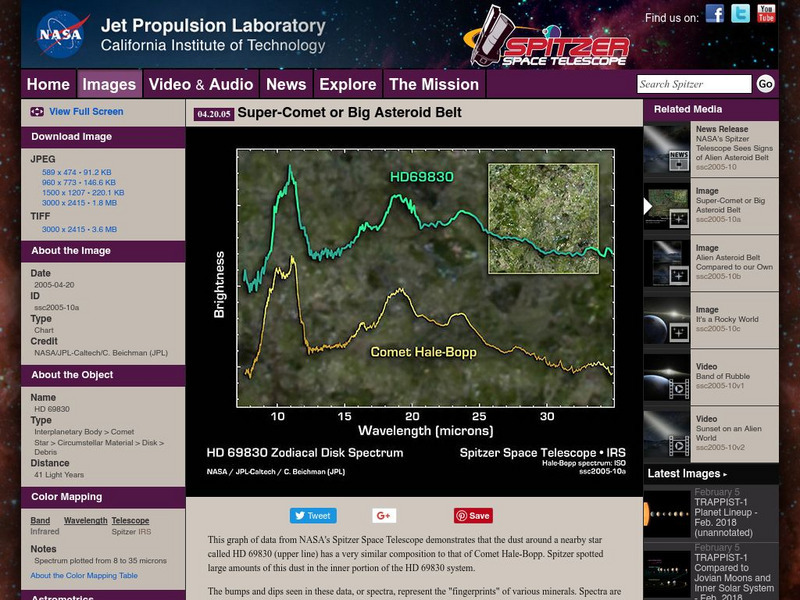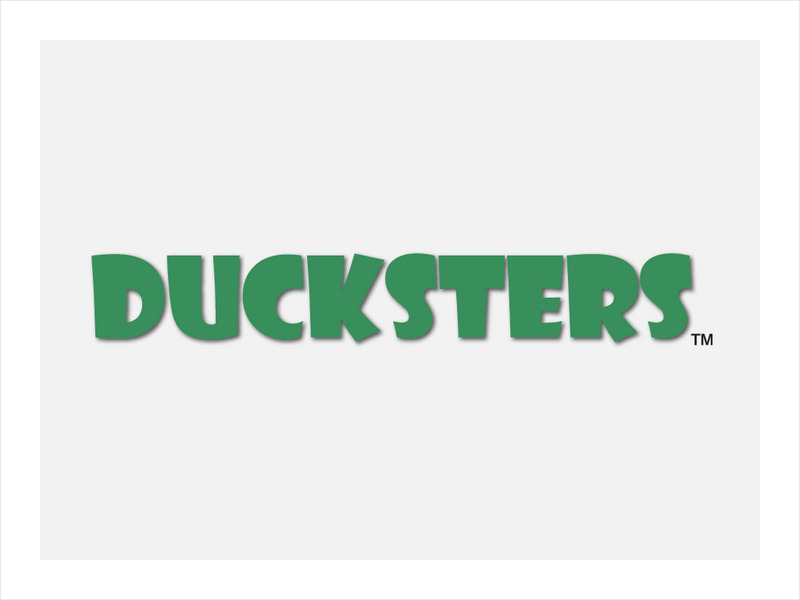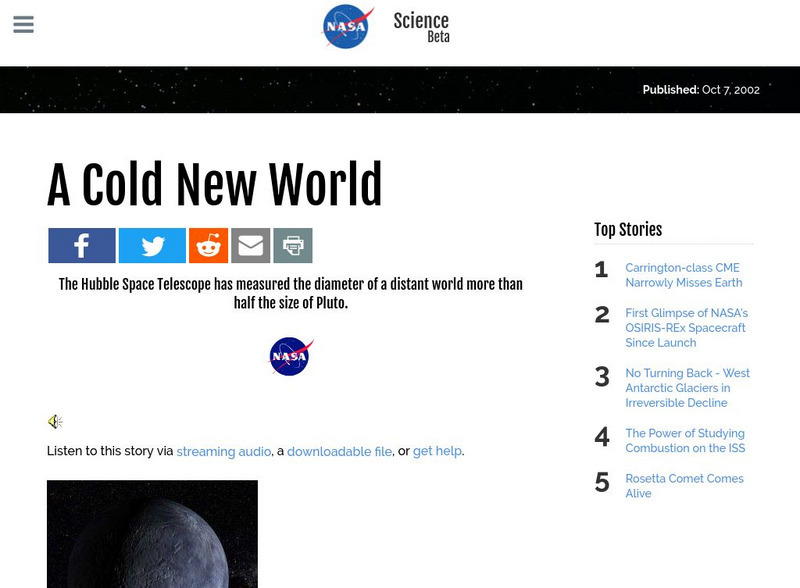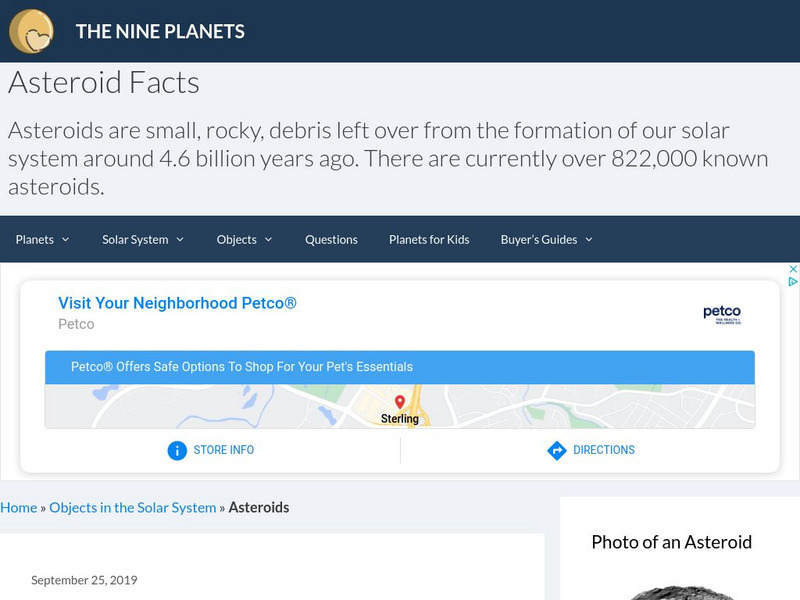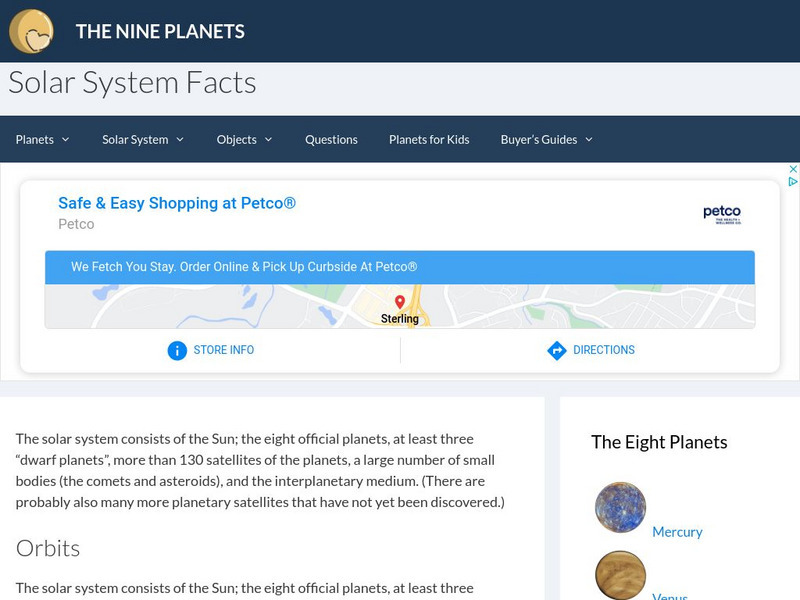Hi, what do you want to do?
Curated OER
Sun too close? We'll just change Earth's orbit
Students study an article and discuss what would happen if the Earth's orbit changed. In this Earth's orbit instructional activity students answer a list of questions and complete an activity.
Curated OER
Solar System Distance Activity
Students examine the distances between the Sun, planets, and smaller objects in the Solar System. They design a model using beads that shows the scale distances of the Solar System using astronomical units converted into a 10 centimeter...
Curated OER
Solar System Fun Facts
Young scholars read facts about the Solar System. In this solar system lesson plan, students read facts on the dimensions, planets, and workings of the solar system. There is a big emphasis on Saturn.
Curated OER
Obtuse Triangles
Fourth graders explore obtuse triangles. In this geometry lesson, 4th graders make obtuse triangles with paper and scissors. They determine how to find the center of their triangle.
Curated OER
Got Space?
Students explore our solar system of planets through research and activities. Using cooperative grouping and interaction, students gain an understanding of how the characteristics of the planets differ from one another.
Other
Discover and Learn: The Asteroid Belt
Read a very brief article on the asteroid belt. Includes an image of an asteroid, as well as a chart showing the asteroid belt's location in relation to Jupiter and Mars.
NASA
Nasa Star Child: The Asteroid Belt (Level 1)
Learn about asteroids in our solar system. Discusses where you will find the asteroid belt and what it is. Vocabulary words linked to a glossary of terms and a printable version are available.
PBS
Wgbh: A Visit to Asteroid Vesta
A breakdown of one of the largest asteroids in the solar system, Vesta is featured through data, images, and animation. This asteroid is found in the asteroid belt between Jupiter and Mars.
Other
University of Leicester: Comets, Asteroids & Meteorites
Provides a general overview of comets, asteroids, and meteorites. Content includes ways to identify them in the night sky, as well as detailed information on each type of small body.
NASA
Dawn Mission: Dawn Classrooms: The History and Discovery of Asteroids
Student groups explore scientific breakthroughs and the development of technologies that eventually led to asteroid discovery aboard the Dawn space mission. Learning module components include jigsaw reading, model building, math...
Cosmos 4 kids
Cosmos4 Kids: Solar System Details: Kuiper Belt
Explore space beyond Pluto in the Kuiper Belt region of our solar system. Find out about the space bodies that exist there and what our space missions have taught us about this far away region.
California Institute of Technology
Spitzer Science Center: Super Comet or Big Asteroid Belt?
This image, titled "Super-Comet or Big Asteroid Belt?" features a chart representing what could either be a large comet or a cluster of asteroids. The text under the image details various specifics about the picture.
Ducksters
Ducksters: Astronomy for Kids: Asteroids
Kids learn about asteroids in the science of astronomy. Large chunks of rock and metal that orbit the Sun including the asteroid belt, Ceres, and Vesta.
NASA
Nasa: A Cold New World
Quaoar, the most recent addition to our solar system, has displayed many planet-like characteristics but has yet to be named "the 10th planet." Learn more about the interesting find here. Many links to various sites on Quaoar and the...
Nine Planets
The Nine Planets: Asteroids 253 Mathilde
This site explores what is currently known about the asteroid 253 Mathilde. Content includes an orbiting path, and composition. Links are provided throughout for additional information.
National Earth Science Teachers Association
Windows to the Universe: Our Solar System
Our solar system is filled with a wide assortment of celestial bodies - the Sun itself, our eight planets, dwarf planets, and asteroids - and on Earth, life itself! The inner solar system is occasionally visited by comets that loop in...
NASA
Nasa Star Child: The Solar System
Discover information about parts of the Solar System, along with definitions just by clicking on highlighted vocabulary terms. Be sure to try the "Solar System Activities" to review the material from these pages.
Georgia Department of Education
Ga Virtual Learning: Our Solar System
This interactive tutorial will take students on a tour of our solar system. Students begin near the Sun with the really hot planets of Mercury and Venus. They will learn about Mars, probably the first planet that humans will visit. Next...
Nine Planets
The Nine Planets: Asteroids
A plethora of information about Asteroids. This site provides lots of in-text links to information, pictures of asteroids, a table full of information about asteroids, as well as links to more information about asteroids.
Wikimedia
Wikipedia: Asteroid
This site from the encyclopedia Wikipedia is a good resource page on asteroids. Gives details on different groups of asteroids that have been identified; how they get their name and number after identification; the six types of...
Nine Planets
The Eight Planets: Just for Kids
Here is a clear, simple picture of the solar system. Click on the names of the planets to learn more about each. Clicking on underlined terms takes you to more and more detailed scientific information.
NASA
Nasa Space Place: Asteroid or Meteor: What's the Difference?
Learn the difference between asteroids and comets, meteoroids and meteorites, and more!
Nine Planets
The Nine Planets: An Overview of the Solar System
A detailed overview of the history, mythology, and current scientific knowledge of each of the planets and moons in the solar system.
PBS
Pbs: Tour the Solar System
Click on each space object to discover facts and other information about the many space objects that make up the solar system.














